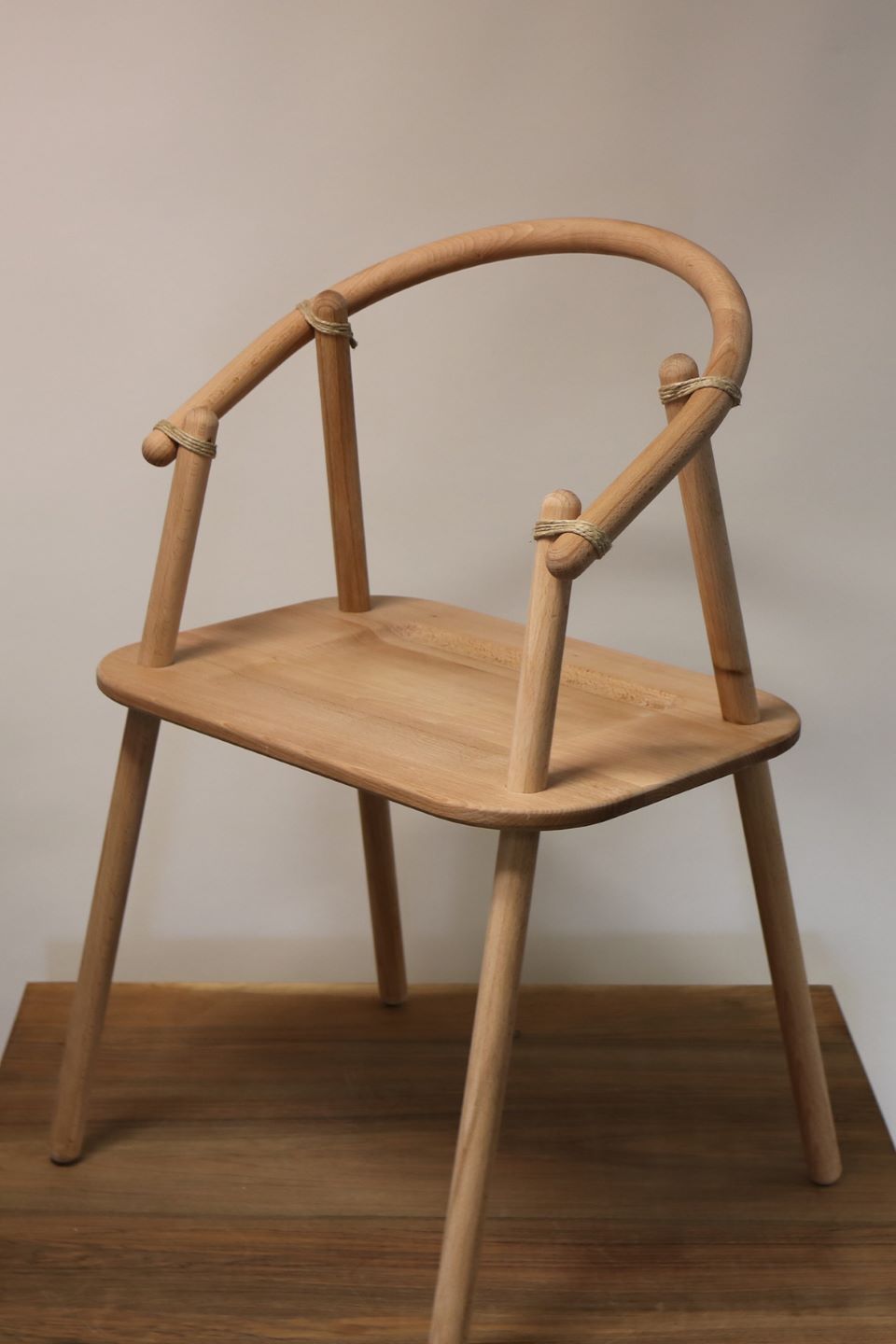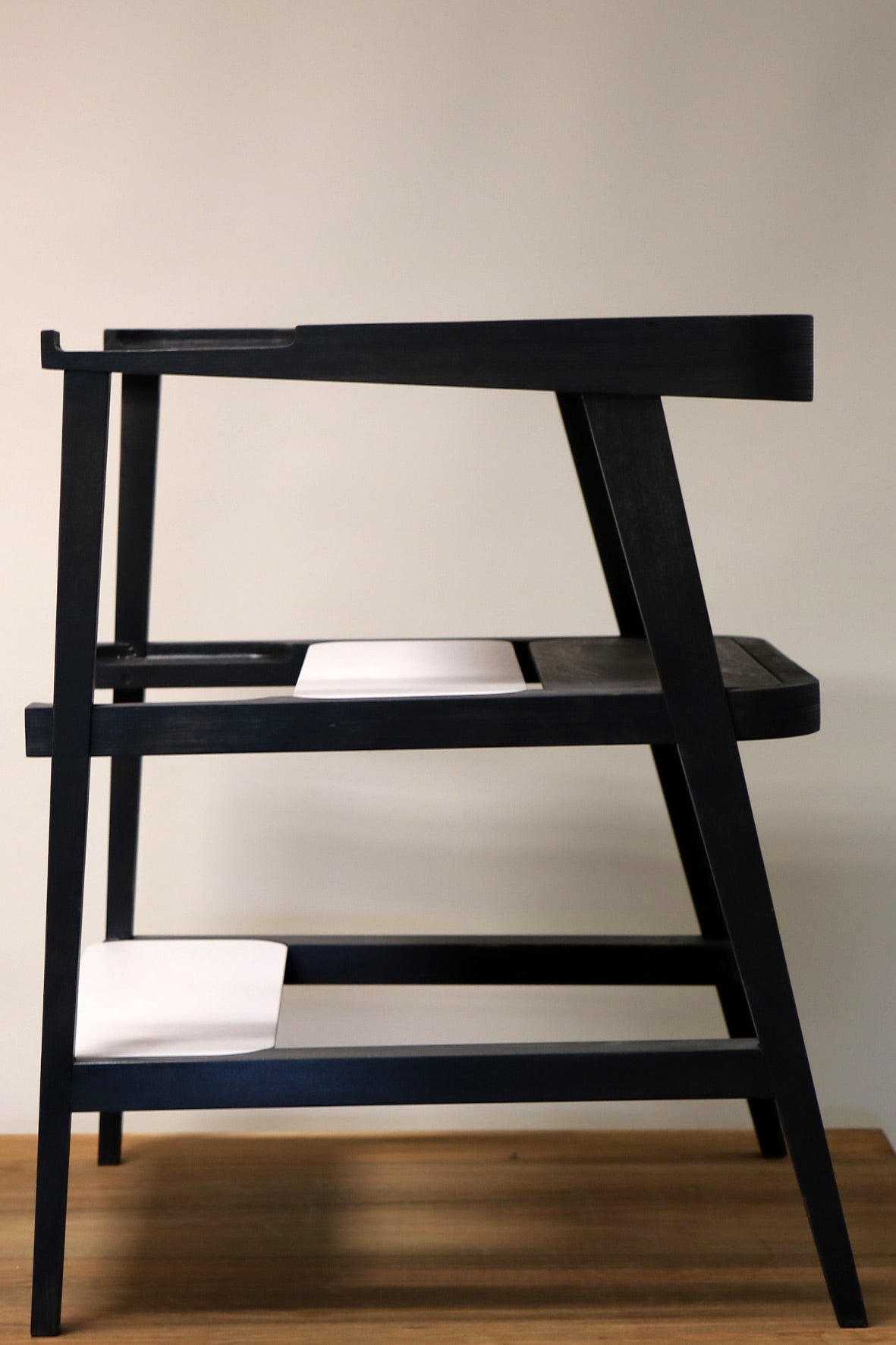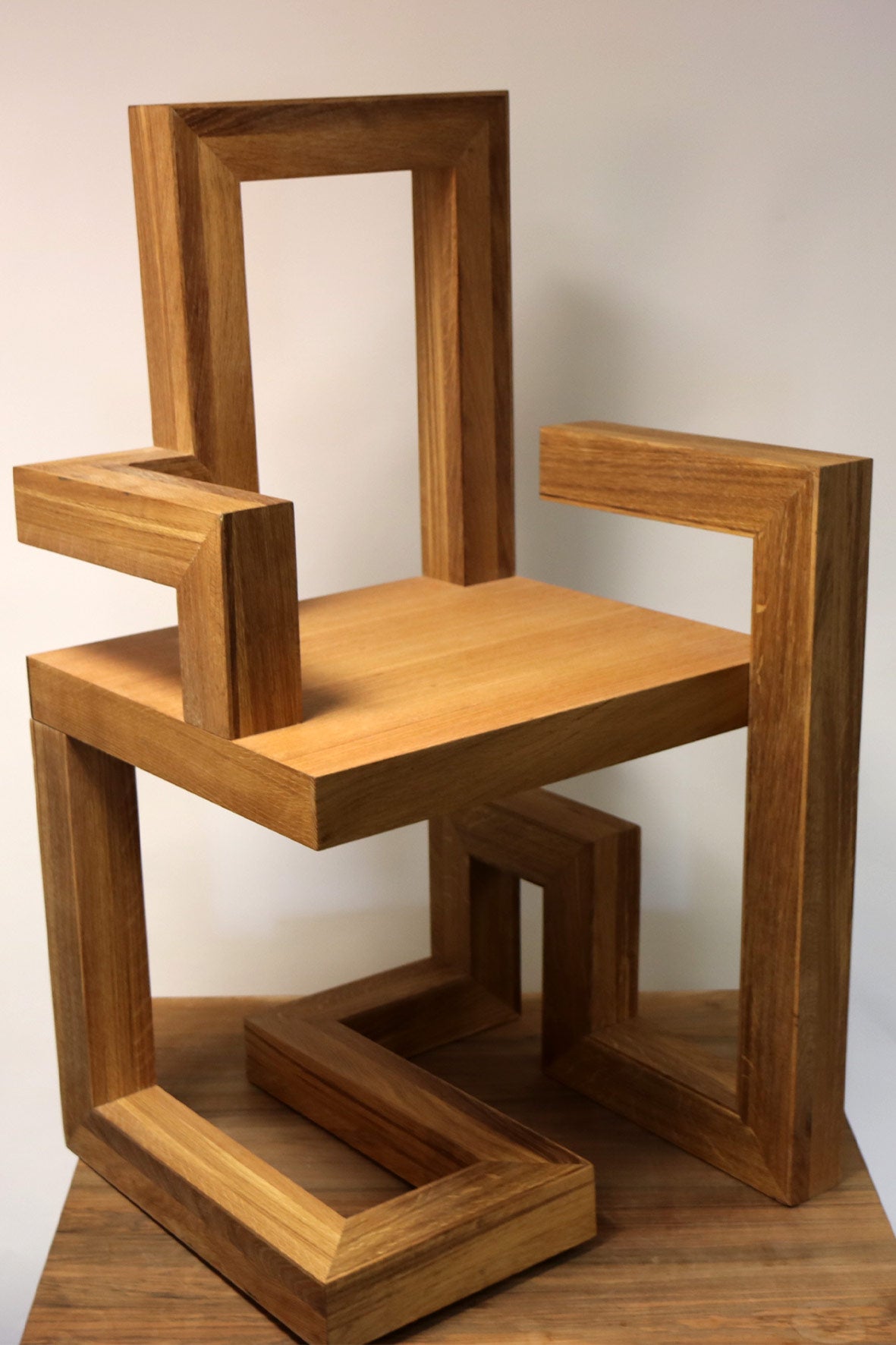PRIMAL CHAIR - 2019

1st PLACE: MATKO PLOVANIĆ IN STEFAN VIDOVIĆ, PRIMAIRE CHAIR, CROATIA
The Primaire chair by Matko Plovanić and Stefan Vidović represents an excellent example of design inspired by tradition. Reinterpretations of the original method of joining wooden sticks, which were connected with elastic branches, formed a simple yet effective means of stabilization. In designing Primaire, the authors replace this joint with a modernly designed connector, which they paraphrase through an innovative approach into a simple yet effective detail. The refined composition of the chair consists of turned wooden sticks, a curved backrest, and a solid seat surface. Together, connected with modern bonded joints, they form a surprisingly stable structural design of the chair. Respect for the cultural heritage of their ancestors, from which the authors drew inspiration, has given birth to a simple chair with artistically emphasized joints. They have designed a modern chair with an original and memorable form that convinced the professional jury.

2nd PLACE: SNEŽANA JEREMIĆ, STOL DASKA, SERBIA
Snežana Jeremić's Daska chair is much more than just a chair. In its composition, we do not perceive the usual clumsiness that is characteristic of almost all multifunctional objects. The frame is elegant and at the same time stable. Inserting the boards into the grooves, precisely cut into the solid frame at various places or heights, allows for seating both children and someone sitting at a high counter. With a simple adjustment of the boards, the chair can easily transform into a ladder, a table, a stool, and more. It convinced the professional jury with its precisely thought-out design concept, which skillfully maintains a harmonious visual form even when the boards are moved to a different position. It is distinguished by its multifunctionality, which reduces the need to purchase items with another function and thereby reflects consideration for the environment.

3rd PLACE: LUNA APOLLONIA, STOL PRASTOL, ITALIA
In the composition, the interweaving of wood does not reveal the usual number of legs, clear backrest, and armrests, yet its appearance clearly represents a chair that beckons us to sit and try it out. The author strings together vertical and horizontal wooden elements, one after the other, or one on top of the other in different directions, skillfully connecting them with each other. With careful and deliberate arrangement, they are stacked into a closed loop, representing the archetype of a chair. The Prastol impressed the professional jury with its harmonious visual form and almost sculptural value of the interwoven wood.
